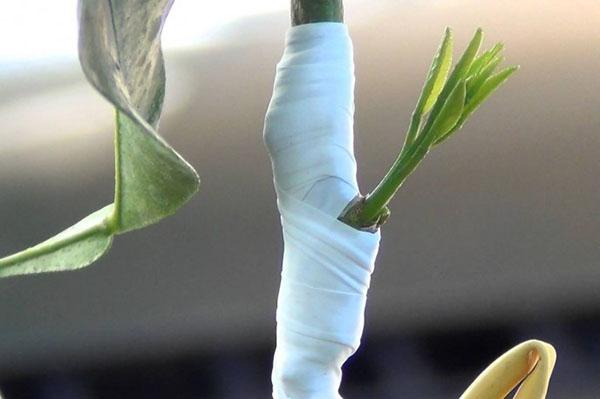Growing an indoor lemon seedling and grafting for accelerated fruiting
 Indoor lemon, like any citrus plants, bears fruit in the third year after citrus grafting on the stock. If you grow a citrus plant from a seed, then such a bush will begin to tie the first flower buds 5 years after planting in the ground, and will bear the first fruits no earlier than 10-15 years after planting. For citrus fruits grown from seeds, you need to look after: carry out annual crown pruning and seasonal feeding.
Indoor lemon, like any citrus plants, bears fruit in the third year after citrus grafting on the stock. If you grow a citrus plant from a seed, then such a bush will begin to tie the first flower buds 5 years after planting in the ground, and will bear the first fruits no earlier than 10-15 years after planting. For citrus fruits grown from seeds, you need to look after: carry out annual crown pruning and seasonal feeding.
If you want to get a lemon from a seed as quickly as possible, then in any case you will need a cutting of a fruiting branch, and a lemon grown from a seed will serve as a stock. Other plants from the citrus family, for example, a tangerine tree or a pomelo bush, can also become a stock for a lemon.
Grafting lemon on citrus fruits
In order to instill lemon on other citrus plants, a two-year stock can be used. By this age, a well-grown citrus rootstock should reach a thickness of 3 to 5 cm. A two-year-old rootstock can be used up to three times with unsuccessful grafting attempts.
In no case should an orange and lemon (sweet and sour) be grafted onto one stock at the same time, because the grafts will not take root. But it has been noticed that grapefruit and lemon grow well on the same rootstock.
The grafting is done with a sharp razor blade. All leaf plates are cut from the scion. This must be done to stimulate the growth of new shoots. Then the rootstock bark is cut. The cut should be even, without bevels and bumps, so make it in one smooth motion. The length of the longitudinal incision should be 2 cm. After the notch is made, a deciduous bud is cut from the scion and inserted into the notch.
The bud should completely cover the rootstock cut, it is very important to carefully align the bud and the cut. When combining, you cannot grab the incision of the bud, therefore, for convenience, a leafy petiole is left on it.
Next, you need to tightly tie the kidney to the trunk. To do this, use a tape cut from a latex medical glove. This tape can stretch very much, which saves material and time when grafting a lemon. The bud should be completely covered with this tape, leaving only the leafy petiole intact. It is an indicator of the survival rate of the vaccine. If the graft has taken root, then after ten days the petiole will turn yellow and fall off the main trunk. If the lemon has not taken root, the leafy petiole will turn black and dry to the trunk.